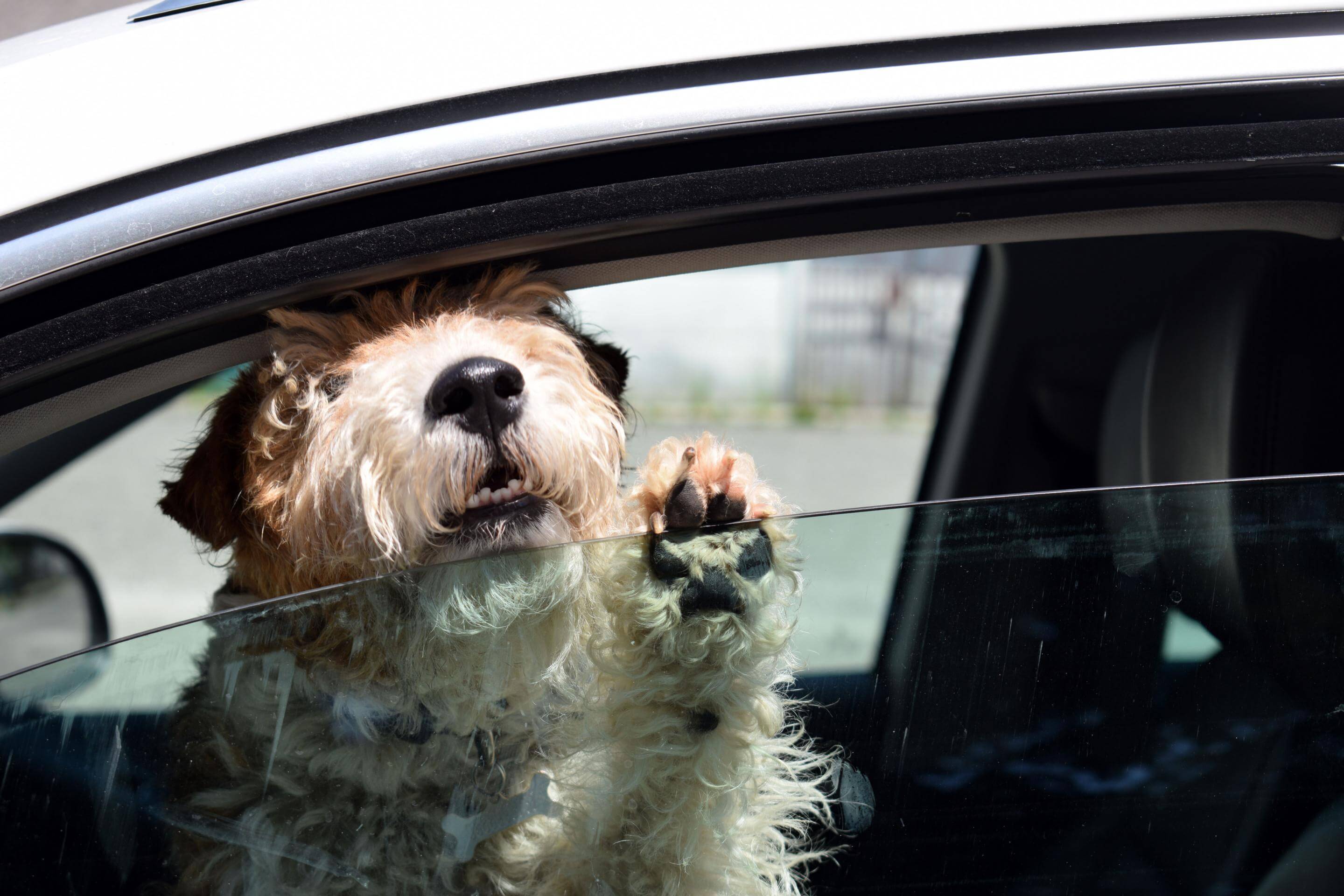Summertime. Long strings of 90 plus degree weather days. Something that should be on the minds of any pet owner is whether or not it is safe outside for their pets in this heat! With this pandemic and more owners spending time at home with their pets, we need to be more aware of what is safe or not safe to do outside.
Heatstroke can sneak up on the best of owners, so being overcautious is not necessarily a bad thing. Sometimes it is easier to be reminded about it on extremely hot and humid days, but it is also something that needs to be considered on less obvious days when leaving a pet outside or in a car.
A dog’s normal body temperature is already higher than ours, being at 99-103 degrees typically. A dog that gets overheated can have a temperature of 105-109 degrees and that can become dangerous or even turn deadly. Some dogs are more prone to heatstroke than others, but it can happen to anyone. Being hyper-aware when you have Brachycephalic (“smashed nose”) dogs is very important. They are not efficient at panting to cool themselves and can quickly have trouble breathing and swelling in their throats when they get overheated. Also, thinking about what your dog is acclimated to is important. A dog that spends 90-100% of their time outdoors would be better suited to hotter weather than a dog that only goes out to potty with more occasional activities outside. Consideration of dog breed, thickness of coat, and what climate they are accustomed to can also be important.
During the summer, try to choose the coolest and least humid times to do activities outside and limit more strenuous activities to other times of the year. Running, chasing ball, and even just staying in a fenced yard with inadequate shade can become dangerous within a short time for some dogs. Staying in a closed-up car (even with the windows cracked) is extremely dangerous when outside temperatures are 70 and above, especially when the car is in the direct sun. Many reports and videos show how quickly temperature can rise in a closed car, but this can be much worse when a pet is anxious, moving around, barking, or getting upset seeing other people or animals outside of the car. This can be especially dangerous even for “quick” trips into a store.
Signs and symptoms of heat stroke can lag behind the severity of the situation, so action should be taken quickly if symptoms are noted. Some early signs can be subtle and just appear to be heavier than normal panting or restlessness. These can turn to excess drooling, salivating, liquid dripping from the nose or mouth, or thicker foamy saliva. If action is not taken quickly, a dog can collapse, seize, become unresponsive or even die as the next demonstrated symptoms.
If you suspect your dog is getting overheated, moving him/her to a cooler shaded location (ideally indoors) immediately is recommended. Refreshing cool/damp cloths over the neck, groin, and armpits while a fan is blowing in their direction can be helpful. Getting the dog to a veterinarian ASAP is highly recommended at this point. It is extremely important to cool them down but not too extreme or too fast. Do not put them in an ice bath or submerge their whole body in cold water. Knowing how fast and what degree of cooling is best done by trained veterinary staff who can monitor rectal temperature and get an IV catheter placed when appropriate.
While we all love spending time with our pets and feel exercise is important, there are times we need to know when it is best to just stay indoors in the nice cool air conditioning! Keep cool out there and Stay Safe!!
- Dr. Kristin Christy

